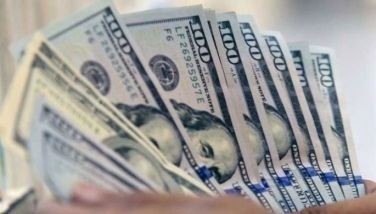‘Disturbing developments in Japan and China’

Japan and China are important growth drivers for our economy. Their significance in this role came and evolved in succession. This role plays out for other Asian economies as well, and to the world economy.
In recent weeks, some disturbing news from both economies adds a negative accent to the short run outlook.
There are positive elements in our relationships with these big economies even when conditions are not ideal, or even disappointing. In this discussion, we put accent on the worrisome aspects.
Japan’s economic stagnation. Today, Japan’s GDP has not progressed much from its level IN the early 1990s. Japan’s domestic economy from the early 1990s has been in relative economic stagnation.
Before that period, Japan’s economy was the original spectacular growth story in East Asia.
Then an asset bubble broke the spectacular growth path with the collapse of property prices. The stagnation of the Japanese economy has been a mystery needing a solution. For two decades now, no government in Japan has succeeded to restore the old dynamism that characterized the Japan growth story.
Yet, Japan’s strong presence through its industrial and trading companies has been part of the rise of other East Asian countries due to Japanese foreign direct investments. Japanese enterprise is found in many economically rising countries.
In the third quarter this year, Japan’s economy registered negative growth, triggering a return to recession. This recessionary drift has unexpectedly induced its economic reforming prime minister to call unexpectedly for a new election to seek renewed mandate.
A snap election adds greater risk and uncertainty to the future outlook.
The longer term context. In the early years of independence, especially since the 1950s, Japan began to take an important role in our economic progress even as she was recovering from the war destruction.
The growth of two-way trade volume with Japan makes it a major trade partner. Additionally, Japanese firms have participated heavily in our domestic economy through direct investments. Japanese official development assistance has helped cement this positive influence even more.
After economic liberalization of China and especially since the 1980s, it became a steady source of mutually profitable trade. China’s competitive position as a producer of goods dependent on inexpensive labor has affected our competitive edge in that line as long as its labor supply was not exhausted.
China’s declining growth rate. The economic growth rate of China has been falling in recent times, reaching this year its lowest rate on a year-on-year basis. Is this a foreboding of lower future expansion?
For more than three decades, China’s average growth was remarkable, hovering at least at 10 percent per year. But since 2008, this has fallen following the world recession. Moreover, the growth strategy has moved toward domestic rather than export expansion, given continuing global economic difficulties.
Economic restructuring in China is happening partly in response to rising domestic costs. Labor costs have risen despite rising productivity in view of successive years of economic absorption of the excess labor force.
Exchange rate appreciation is making this adjustment smoother. The rising value of the yuan makes imports cheaper and Chinese exports more expensive, thus re-switching demand in favor of home production.
From a sustained peak of 10 percent annually for almost 35 years, the growth rate declined starting in 2008. The last two years, 2012 and 2013, have averaged 7.8 percent. Further, the growth rate for 2014 is expected to be 7.5 percent. The recent growth of above 7.3 percent is running on course, slightly off the expected growth rate.
Abnormal rise of non-bank financing. A feature of recent development is that, even as the monetary authorities have been holding off excessive credit expansion in tune with the current pace of growth, a rapid expansion of credit from the unregulated part of the financial system has been happening.
“Shadow bank financing” in China has been singled out by international authorities as the cause of this expansion. They see this as an unhealthy economic sign. Such form of financing is a catchall phrase for private lending among individuals, loan shark operations very common in informal credit markets. They also include such sophisticated financial instruments as derivatives, money market funds, securities lending and repurchase agreements in more developed financial institutions. It is as common in emerging as in economically advanced countries.
The Financial Stability Board (FSB), in its recent report on financial stability issues singled out for concern the rapid rise of shadow banking finance in China. The FSB is an international task force created by the G20 (the Group of 20 countries),
In 2013, shadow bank financing in China grew by 37 percent. The year before, it was 42 percent growth. These are very high growth rates and they appear to have substituted for the relatively modest increases in traditional domestic finance. As a result of this, there has been a rise of more risky debt to GDP.
Such growth is one of the highest recorded among countries in the world. Only Argentina, a country is in the midst of difficult financial challenges, appears to have exceeded this pattern.
The International Monetary Fund (IMF) considers the FSB estimates of shadow banking as conservative. Expanding on a number of financing activities that further include trust institutions and some types of bond purchases as part of the definition, the IMF arrives at a higher level of shadow bank financing in the country.
This broader definition of the IMF places the extent of shadow banking finance to reach a level of 55 percent of GDP, about 20 percentage points higher than the narrower FSB definition, which amounts to 35 percent of GDP.
This rapid growth of relatively unregulated financing has worried international financial experts. For it could trigger financial instability and therefore new financial crises.
Indeed, some defaults in lending have already occurred in China as to cause concern for the financial regulators. So far, none of these have yet led to any financial panic.
Economic observers have pointed to the property sector as being overbuilt. Signs of this could be found in the incidence of newly built constructions without occupants and falling property prices.
Could these be signs of an impending property bubble in China?
My email is: [email protected]. Visit this site for more information, feedback and commentary: http://econ.upd.edu.ph/gpsicat/
- Latest
- Trending

























